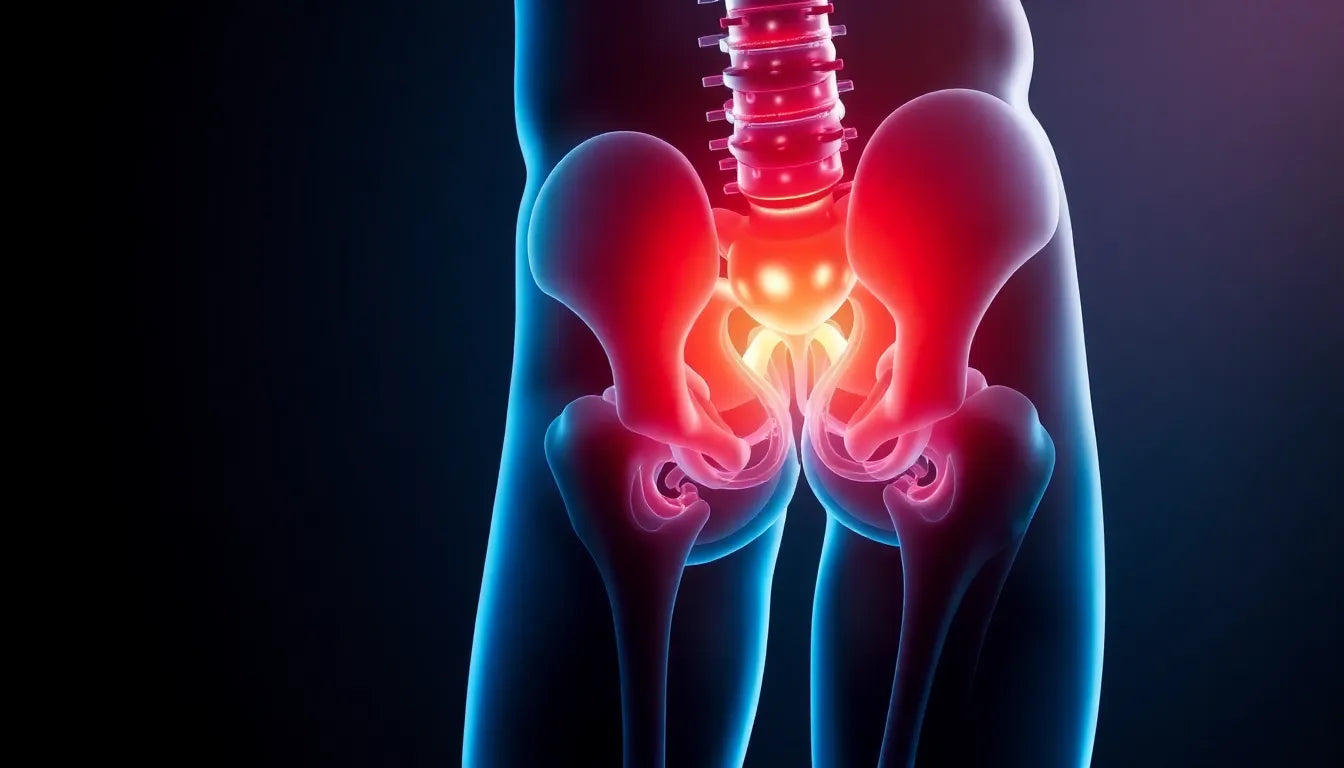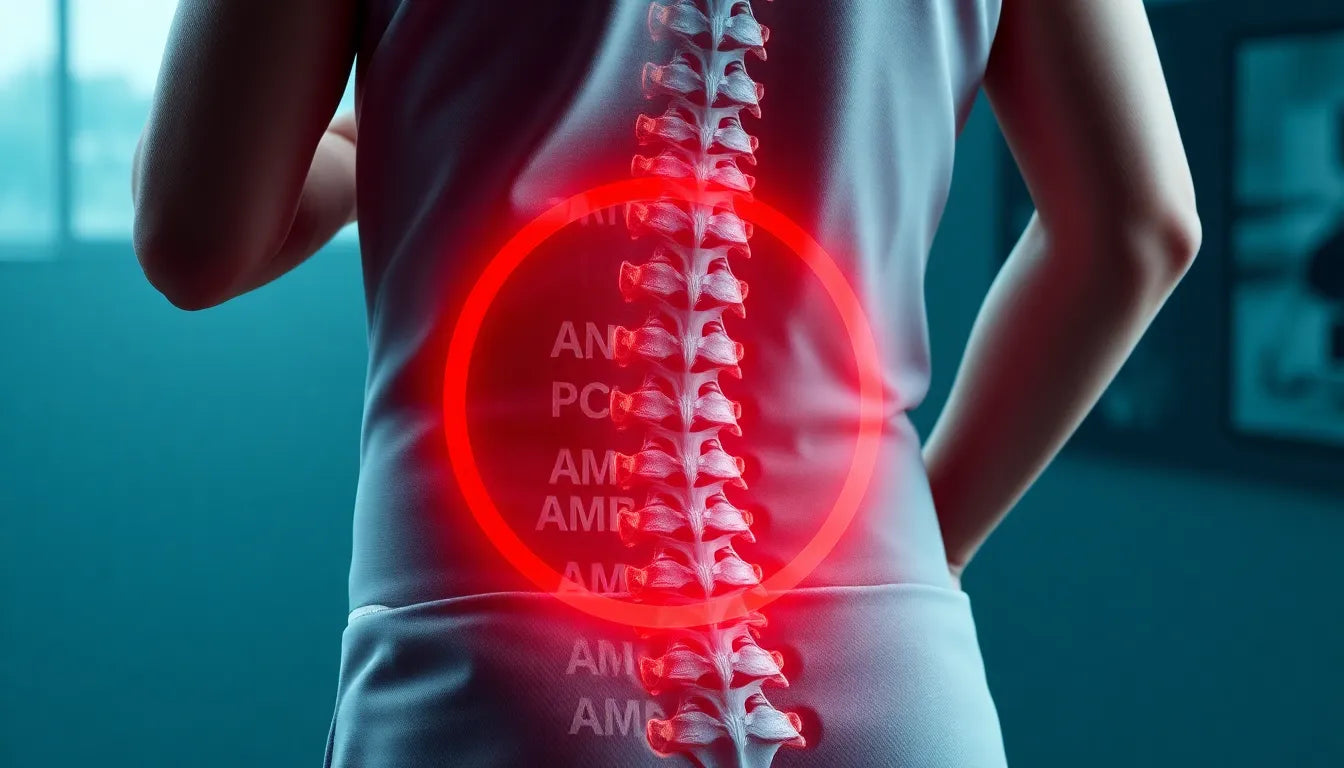Dealing with a herniated disc can be a daunting experience, often accompanied by a quest for immediate relief. A herniated disc, sometimes referred to as a slipped or bulging disc, occurs when the soft, gel-like center of a spinal disc pushes through a crack in its tougher exterior. This condition can lead to pain, numbness, or weakness in an arm or leg. A common misconception is that a herniated disc can simply be "put back in place." However, it's crucial to understand that the focus should be on managing symptoms and supporting the body’s natural healing process rather than attempting to forcefully reposition the disc.
Understanding herniated discs
Herniated discs are a frequent source of back pain and can significantly impact daily life. The condition arises when the inner core of the disc protrudes through a tear in the outer layer, often compressing nearby nerves. This can result in pain, tingling, or weakness in the affected area. While the notion of "putting the disc back in place" is appealing, it's not a viable or medically accurate solution. Instead, the emphasis should be on alleviating symptoms through effective management strategies that allow the disc to heal naturally over time.
Managing a herniated disc involves a combination of approaches aimed at reducing pain and inflammation while promoting healing. It's essential to adopt strategies that support the body's recovery process, which can include a mix of home remedies, lifestyle adjustments, and professional treatments. By focusing on symptom relief and proper care, individuals can often experience significant improvement without the need for invasive procedures.
The search for relief
Living with a herniated disc can take both a physical and emotional toll. The persistent discomfort and limitations on movement can lead to frustration and anxiety, making the search for relief all the more urgent. Fortunately, there are various treatment options available, ranging from simple home remedies to more structured professional interventions. These options are designed to address the pain effectively and support the body's healing process.
Many people find relief through a combination of heat and cold therapy, which can help manage pain and reduce inflammation. Low-impact exercises, such as walking or swimming, are also beneficial as they promote circulation and strengthen the muscles supporting the spine. For those seeking additional support, professional interventions like physical therapy and acupuncture can provide targeted relief and facilitate recovery.
Ultimately, the goal is to empower individuals with the knowledge and tools needed to manage their condition effectively. By understanding the nature of herniated discs and embracing a comprehensive approach to treatment, it's possible to alleviate pain and enhance quality of life. In the following sections, we'll explore these strategies in greater detail, offering practical advice and insights to help you on your journey to recovery.
pain relief strategies for a herniated disc
When dealing with a herniated disc, understanding effective pain relief strategies is crucial. These strategies not only help alleviate discomfort but also support the body's healing process. Two widely recommended approaches are heat and cold therapy, which can be used alternatively depending on the symptoms.
heat and cold therapy
Heat therapy is particularly effective in relaxing tight muscles and improving blood flow to the affected area, which can help in reducing pain. Applying a heating pad or a warm compress to the painful area for 15-20 minutes, several times a day, can promote relaxation and comfort. On the other hand, cold therapy is beneficial for reducing inflammation and numbing acute pain. Ice packs or cold compresses should be applied for 10-15 minutes to help minimize swelling and provide relief.
Here is a simple comparison of when to use each therapy:
| Therapy | When to Use |
|---|---|
| Heat Therapy | Muscle tightness, chronic pain |
| Cold Therapy | Inflammation, acute pain |
low-impact exercises for herniated disc recovery
Incorporating low-impact exercises into your daily routine can significantly aid in managing herniated disc symptoms. Activities like walking, stationary biking, and water therapy are excellent choices as they enhance circulation and strengthen the muscles that support the spine without putting undue stress on the back.
Here are some safe exercises to consider:
- Walking: A gentle walk can help maintain mobility and improve overall health. Start with short distances and gradually increase as comfort allows.
- Stationary Biking: This exercise provides cardiovascular benefits while being gentle on the spine. Adjust the seat to ensure proper posture.
- Water Therapy: Exercising in water reduces the impact on the spine and joints, making it an ideal environment for those with back pain.
Consistency is key, so aim to include these exercises in your routine several times a week for optimal results.
positioning and sleep recommendations
Proper positioning, especially during sleep, plays a vital role in managing herniated disc symptoms. Maintaining correct spinal alignment can help alleviate pressure on the affected disc and promote healing.
tips for sleeping with a herniated disc
When sleeping, consider these practical tips to ensure your spine is well-supported:
- Pillow Placement: Use a pillow under your knees if you sleep on your back or between your knees if you sleep on your side. This helps maintain natural spinal alignment.
- Sleeping Positions: Opt for a position that minimizes pressure on the spine. Side sleeping with a pillow between the knees or back sleeping with a supportive pillow under the knees can be beneficial.
Here's a diagram illustrating recommended sleeping positions for those with lumbar herniation:

Implementing these strategies can significantly enhance comfort and contribute to the overall management of herniated disc symptoms. By focusing on pain relief and proper care, individuals can support their body's natural healing process and improve their quality of life.
Professional interventions for herniated disc pain
While home remedies and lifestyle adjustments can provide significant relief for many individuals, professional interventions may be necessary for those experiencing severe or persistent symptoms. These interventions aim to enhance mobility, reduce pain, and improve the quality of life for those affected by a herniated disc.
Physical therapy for herniated discs
Physical therapy is a cornerstone of professional treatment for herniated disc pain. A physical therapist can design a personalized exercise program that focuses on strengthening the muscles supporting the spine, enhancing flexibility, and improving overall posture. Techniques often include stretching exercises, core strengthening, and manual therapy to help alleviate discomfort and prevent future issues.
By working closely with a therapist, patients can learn how to move correctly and perform daily activities in a way that minimizes strain on their back, leading to long-term benefits and reduced pain.
Alternative and medical treatments
For those seeking alternative approaches, acupuncture has gained popularity as a method to stimulate the body's natural healing processes. By targeting specific points, acupuncture can help reduce pain and inflammation associated with herniated discs.
In more severe cases, minimally invasive procedures like laminectomy and discectomy may be considered. These surgical options are typically reserved for patients who do not respond to conservative treatments and experience significant pain or neurological symptoms. A flowchart illustrating the progression from home remedies to medical interventions can help patients understand their options and make informed decisions.
Conclusion
Addressing herniated disc pain effectively requires a comprehensive approach that combines various strategies. From home remedies and exercises to professional interventions, each method plays a vital role in managing symptoms and supporting the body's healing process. It is crucial for individuals to consult healthcare professionals to receive personalized advice tailored to their specific needs. By taking proactive steps, patients can unlock relief and improve their quality of life.
Frequently Asked Questions
Can a herniated disc heal on its own?
Yes, in many cases, a herniated disc can heal on its own over time. The body has natural healing mechanisms that work to reduce inflammation and repair the disc. Factors such as age, overall health, and adherence to recommended treatments can influence recovery time, which can range from a few weeks to several months.
What activities should be avoided with a herniated disc?
Individuals with a herniated disc should avoid activities that could exacerbate their symptoms. These include heavy lifting, high-impact sports, and any movements that involve twisting or bending the spine excessively. It's important to listen to your body and avoid any activity that causes pain.
When should I see a doctor for a herniated disc?
It is advisable to see a doctor if you experience worsening pain, numbness, or weakness, particularly if these symptoms extend into your arms or legs. Additionally, if you have difficulty controlling your bladder or bowels, seek medical attention immediately, as these could be signs of a more serious condition.
Is surgery always necessary for a herniated disc?
Surgery is not always necessary for a herniated disc and is typically considered a last resort. Most patients find relief through conservative treatments such as physical therapy, medication, and lifestyle changes. Surgery may be recommended if these methods fail to alleviate symptoms or if neurological issues arise.
Sources
- Spine-Health. (n.d.). "5 Little-Known Tips for Lumbar Herniated Disc Pain Relief."
- Spine-NJ. (n.d.). "Alleviate Herniated Disc Pain: 4 Best Tips."
- Medical News Today. (n.d.). "Herniated disk: 6 safe exercises and what to avoid."
- HealthPartners Blog. (n.d.). "7 ways to treat a herniated disc naturally."
- NYU Langone Health. (n.d.). "Nonsurgical Treatments for Herniated Disc."
- Cleveland Clinic. (n.d.). "Herniated Disk (Slipped or Bulging Disk)."


















